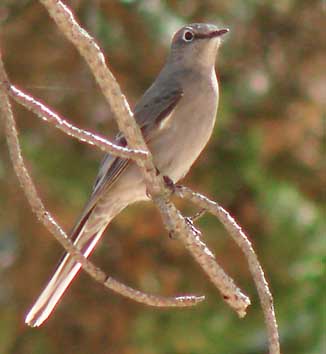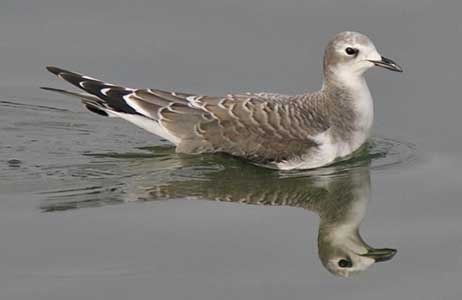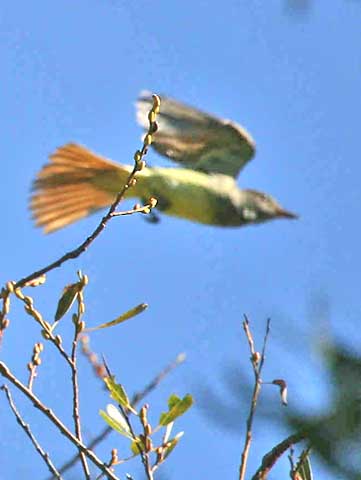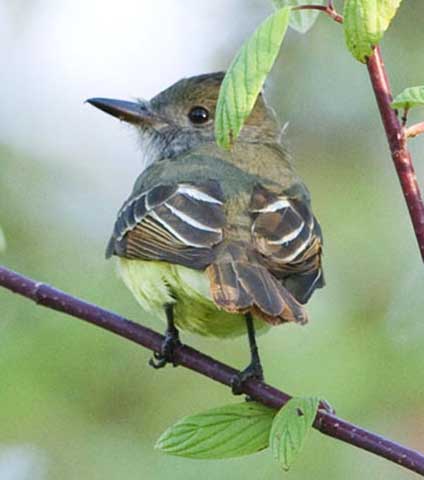|
National Audubon Society had a convention at Asilomar
during the first week of October. A field trip to Carmel River mouth
was offered, led by Don Roberson, Rita Carratello, and Gary Langham.
More than 25 birders participated. It was a very poor day for
landbirds. Kasey Foley first spotted a large, yellow-bellied flycatcher
but it got away unidentified. Some time later, and up around the bend,
someone in the group spotted a large flycatcher high in the canopy.
Laurie Szogas got off a couple quick digital snaps, including this one
(above left) as the bird took off. By the time any leaders got to the
spot the bird was gone, but looking at Laurie's digital display, Don
felt it was likely a Great Crested Flycatcher. Note
that in the flight shot the tail is spread, and that the rufous inner
webs of all rectrices (except the central pair) continue right to the
tip of the feather. On our regular Ash-throated Flycatcher, the dark
outer web expands at the feather tip to "cut off" the rufous from
reaching the tip.
Shortly thereafter the bird was refound for the whole
group and confirmed as a Great Crested, just the 6th for MTY (all in
late Sep–early Oct). It remained through 13 Oct and many more photos
were taken. In Bill Hill's fine shot (above right, taken 7 Oct) the
tail pattern is evident, but more impressive is the sharply-demarcated
crisp white edges to the tertials. On the uppermost tertial that white
edging is very broad and 'bulges' in the center (also on the tertial
below that but less prominently). This tertial pattern, the green cast
to the back, and the extensively pale base to the long, heavy bill
(below; photo © D. Roberson on 8 Oct) exclude Brown-crested
Flycatcher, a species that has not yet reached MTY. Note also the dark
gray breast which contrasts with the yellow belly, most conspicuously
here in the flight shot. |
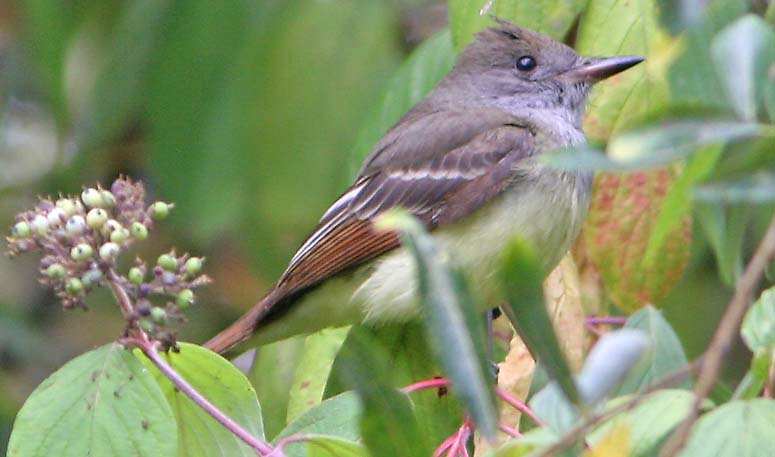

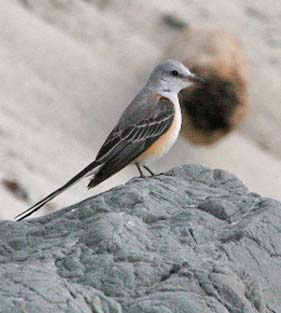 The
final couple months of 2007 were rather quiet, bird-wise. Christmas
Bird Counts at Big Sur and Monterey Peninsula enjoyed (mostly) good
weather but fairly average species totals, and there was nothing like
the excitement of Brown Booby or Blue-winged Warbler as had brightened
counts a year ago. The best bird was a lingering Scissor-tailed Flycatcher
at Big Sur R. mouth (left; © Steve Rovell from the Big Sur CBC).
It was initially found by visiting birders on 24 Nov but was present
off-and-on through late December.
The
final couple months of 2007 were rather quiet, bird-wise. Christmas
Bird Counts at Big Sur and Monterey Peninsula enjoyed (mostly) good
weather but fairly average species totals, and there was nothing like
the excitement of Brown Booby or Blue-winged Warbler as had brightened
counts a year ago. The best bird was a lingering Scissor-tailed Flycatcher
at Big Sur R. mouth (left; © Steve Rovell from the Big Sur CBC).
It was initially found by visiting birders on 24 Nov but was present
off-and-on through late December. 

